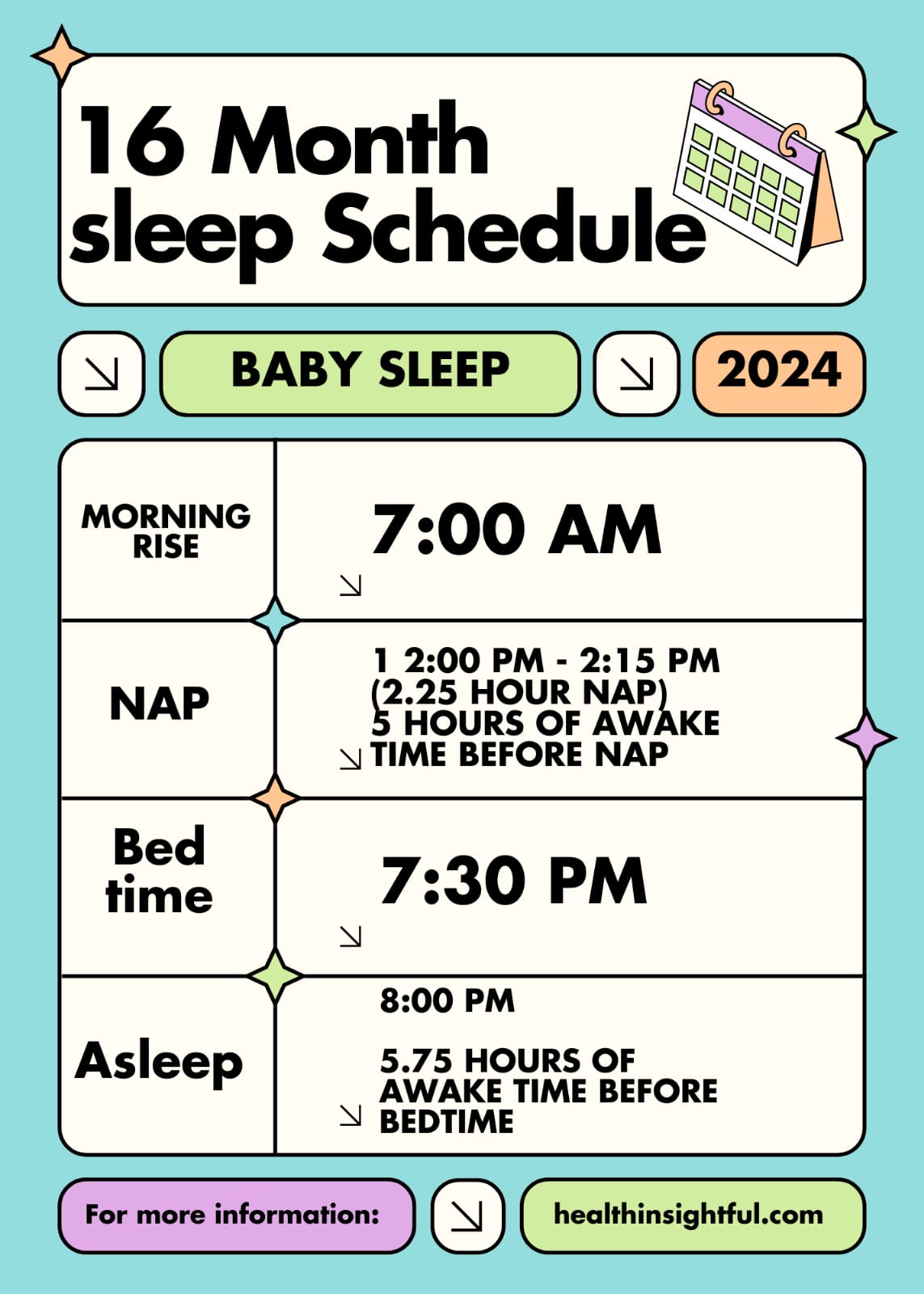Sleep regression is a phase when your child fails to fall asleep without any resistance. Many parents find this phase of their 14-month-old child difficult and stressful. Children suffering from sleep disturbances are undergoing growth and developmental changes. They may avoid naps or wake up more frequently at night.
Does your 14-month-old start waking up at night? You are not alone; many parents go through this distressful phase. Modifying routines and offering comfort can help them return to better sleep patterns. Don’t worry, this phase is temporary, but it will be over soon. Consistency is critical. Maintain a consistent sleep schedule and establish a relaxing bedtime habit. This will help the baby adjust and return to healthier sleep.
Babies at this age learn new things and become more aware of themselves and their surroundings. This can affect their sleep. But you can manage this by knowing information about its cause, the time for which it lasts, nap transitions, and management strategies. In this article, we will discuss all of these things. Lets started
Can a 14-month-old have sleep regression?
Yes, sleep regression can occur at this age, but it is not very common. During this age, children undergo various developmental changes and separation anxiety. Parents feel disturbed when their toddler is 14 months old. The baby is now struggling to fall asleep and wakes earlier. These changes indicate that the baby is suffering from sleep regression. Although this phase is challenging, it is temporary.
14-month sleep regression signs:
Knowing sleep regression signs can help you to manage your baby’s sleep routine. Following are the sleep regression signs
Increased Night Waking:
Your baby may wake up several times every night, requiring reassurance to return to sleep.
Difficulty Falling Asleep:
Bedtime may become challenging as your child resists sleep or takes a lot of time to fall asleep.
Shorter Naps or Nap Resistance:
Your child’s naps may become shorter, or he may wake up in the middle of a nap.
Increased Attachment or Separation Anxiety:
Your child may become more attached to you during the day and worried when you leave, which can extend into nighttime.
How long does a 14-month sleep regression last:
It usually lasts 1 to 2 weeks, which can vary in children. This phase is not permanent; it is short-lived. Your baby’s brain and body are both working while undergoing developmental change, so it is difficult for him to fall asleep. It’s a difficult period for both parents and children. You can correct your baby’s sleep pattern by following a consistent bedtime routine and providing comfort to him.
What causes a sleep regression at 14 or 15 months?
There are several causes of sleep regression. By knowing these, you can handle baby sleep problems better. The following are the causes of sleep disturbance
Sleep Challenges:
Baby faces a lot of sleep challenges from 13 to 18 months. This is quite disturbing and distressing.
Increased Movement During Sleep:
Developmental changes and growth of the baby create tiredness in the baby. Those babies who are at the stage of learning how to walk have increased activity during sleep. This is because their brains are actively learning and integrating these new motor abilities. this results in altered sleep patterns that include shorter and disturbed sleep intervals. Walking is not only a general ability but also closely related to baby sleep. As toddlers become more skilled in their walking, their sleep quality and pattern return to normal
Increased Bedtime Resistance:
child’s growing sense of independence encourages them to be bolder. This makes bedtime more difficult. this is a typical stage of their developing independence, and it does indicate harmful behaviour
Developmental progression:
Toddlers at this age are trying to excel in their walking skills, which is very appealing and exhausting. They are also learning new things and developing a greater sense of self-awareness, which impacts a child’s sleep.
Teething:
Teething is a typical cause of sleep disturbance. Babies can suffer discomfort or pain when their teeth start to sprout. Teething symptoms include salivation, biting on things, and irritation.
Big transitions:
Your baby is undergoing several transitions, including switching from breastfeeding to formula, introducing solid food items into the diet, moving to a different room, and switching from a bottle to a cup. These transitions also affect the child’s sleep as the baby adjusts to new situations.
Environmental Factors:
A comfortable sleeping environment is essential. Light, temperature, and noise can affect your baby’s sleep. Different-colored lights and too much noise in the baby’s surroundings can lead to discomfort. Ensure the sleeping environment is calm, dark, pleasant, and relaxed.

What is nap transition:
shift from 2 naps to one occurs between 13 and 18 months old. As babies grow, they have to decrease the number of naps. This is not an easy task, and it will not happen by itself. You can manage it by simply following nap routines consistently. This is when the baby’s sleep pattern changes, and they feel it is difficult to adjust to the new sleep schedule. Your child may begin to refuse their two daily naps at the age of 12 months. Many parents consider it a signal that their babies want to switch to one nap. This change mostly appears at 15 months for most of the children.
If your baby can manage longer awake time or is a good sleeper, who sleeps till 7 a.m.Then they may be ready to transition to a single nap soon after they turn 1. If your infant wakes up early or has difficulty staying up for long periods of time, the shift to one nap should take place around 15 months.
14-month sleep regression separation anxiety:
Children are much more aware of themselves and their surroundings at this age. So they are attached to persons who care for them. They are not aware of the concept of object permeance. This creates distress and discomfort in them. This stress also appears at bedtime, struggling to fall asleep. If they fall asleep, they can wake up multiple times during sleep. This can be managed by following ways to help settle your baby’s stress, even in your absence. Play games like hide-and-seek with your child. This will help him understand the concept of object permeance.
Spend quality time with them. Engage with them by playing with their toys. Practice planned separation if you are two caretakers of your child. Let one parent stay at home with your child when the other parent is away from the child. Tell your child that you are leaving now and you will arrive soon. This will help the baby to stay calm and patient. Leave their room with a smile on your face. Stay calm and consistent. Don’t show your distress that you are suffering because of your baby’s separation anxiety and sleep schedule disturbance.
How to handle 14-month sleep regression:
Here are tips and strategies for managing sleep regression. By following them, you can handle your baby’s sleep disturbance more easily and properly.
Establish a Consistent Bedtime Routine:
Following a regular bedtime schedule gives your child an alarm when it is time to relax and get ready for sleep. Engage a child in relaxing activities like a warm bath, singing melodies, or reading a story. Make sure that this routine is regular and occurs simultaneously every night. Consistency helps your child fall asleep quickly by offering stability and comfort.
Encourage physical activities:
Encourage your child to walk and engage in other physical activities during the day. This may lessen their need to ‘exercise’ these abilities at night.
Foster Safe Sleep Environment:
A comfortable sleep environment is essential for baby sleep. Maintain a comfortable temperature, make the room darker, and reduce noise. Ensure that the environment is safe, bring down the crib to the lowest level, and ensure that the child is dressed in comfortable sleepwear. Keep the child’s favorite toy or stuffed animal closer to him, adding comfort to his sleep.
Adjust Nap Schedules:
It is recommended that you adjust your child’s nap schedule to accommodate their changing sleep patterns. Monitor their transition from two naps to one. Stop late afternoon naps because they can disrupt their night sleep. Make sure to keep the baby’s nap time consistent, which will ensure good sleep.
Plan for active awake time:
As babies grow, they want more activities to do. Look at the activities that your baby does during wake windows. Do they spend time doing physical activities and investigating their environment? Playing during the wake window is vital for baby sleep. Provide interesting and engaging activities to your child. This will definitely improve the child’s sleep
Respond to Night Wakings with Calm Reassurance:
When your child wakes up during sleep, give a calm response. Don’t switch on lights; engage them in various activities. Encourage them to sleep with a Gentle pat or calm your child with soothing words. This strategy makes your child feel protected and encouraged to fall asleep again. Sleep regression at this age requires patience. Consider this phase as a part of your child’s growth and development. With the passage of time, your child will be able to improve his sleep, and this regression will pass soon.
Conclusion:
Sleep regression at 14 months is common among children. Your children resist falling asleep, avoid taking naps, and wake up at night. This phase is short-lived; you can get through it patiently and calmly. To help the child survive this transition, maintain a consistent sleep pattern and establish a peaceful nighttime routine. If your child continues to experience sleep issues for a longer period of time, consult a healthcare professional. Explore our website for more in-depth advice and practical strategies to help you and your baby sleep better.










